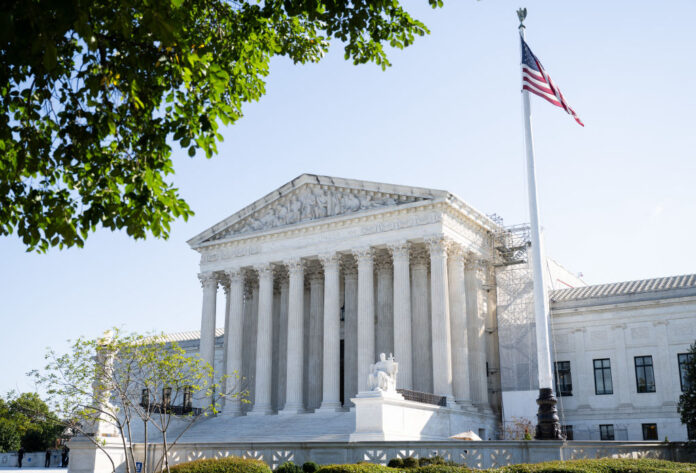The Supreme Court on Monday agreed to review a ruling by a federal appeals court that, the Trump administration contends, “has already caused—and, if left in place, will continue to cause—‘untold interference with the Executive Branch’s ability to manage the southern border.’” The immigrant rights group and asylum seekers who filed the lawsuit had urged the justices to leave the decision by the U.S. Court of Appeals for the 9th Circuit in place, telling them that the government’s argument “would empower border officials to render” federal law governing the processing of asylum seekers “wholly inoperable at ports of entry.”
Under federal immigration law, a noncitizen “who is physically present in the United States or who arrives in the United States … whether or not at a designated port of arrival … may apply for asylum.” Noncitizens who arrive at a port of entry and indicate that they want to seek asylum are inspected and processed – that is, screened by border officials and then channeled into the asylum system, which may include either an interview with an asylum officer or proceedings in immigration court.
In 2016, in response to a surge in the number of Haitian immigrants seeking asylum in San Ysidro, outside San Diego, the Department of Homeland Security initiated a policy known as “metering”: Customs and Border Patrol officials turned back asylum seekers before they entered the United States. The policy was expanded to all ports of entry across the U.S. border with Mexico, and it was formalized in a memorandum in 2018.
Al Otro Lado, an immigrant rights group, and 13 asylum seekers went to federal court in California, where they argued that the metering policy violated the federal law governing administrative agencies. The key question before the 9th Circuit was whether asylum seekers who were turned away from ports of entry before they could enter the United States had “arrived in” the United States for purposes of being able to apply for asylum under federal immigration law.
By a vote of 2-1, the court of appeals agreed with the challengers that they had. “The phrase ‘physically present in the United States,’” Judge Michelle Friedland wrote, “encompasses noncitizens within our borders, and the phrase ‘arrives in the United States’ encompasses those who encounter officials at the border, whichever side of the border they are standing on.” Moreover, she continued, an asylum seeker who arrives at the border must then be inspected and processed.
A deeply divided full court of appeals declined to reconsider the case. In a dissent joined by 11 other judges, Judge Daniel Bress wrote that the panel’s holding “violates clear statutory text, precedent, the presumption against” applying U.S. law outside the United States, “and long-held understandings limiting application of the asylum and inspection laws to aliens ‘in’ the United States—which aliens in Mexico are not.”
The Trump administration came to the Supreme Court in July, asking the justices to weigh in. U.S. Solicitor General D. John Sauer echoed Bress’ dissent, telling the court that the 9th Court’s ruling “defies the plain text of the governing statutes. In ordinary English, a person ‘arrives in’ a country only when he comes within its borders. An alien thus does not ‘arrive in’ the United States while he is still in Mexico.”
The challengers argued that because “the government rescinded the metering policy years ago,” the question that the Trump administration has asked the court to decide “has almost no present implications, and likely no future implications.”
Cases: Noem v. Al Otro Lado
Recommended Citation:
Amy Howe,
Supreme Court agrees to hear case on border crossings,
SCOTUSblog (Nov. 17, 2025, 10:25 AM),
https://www.scotusblog.com/2025/11/supreme-court-agrees-to-hear-case-on-border-crossings/





